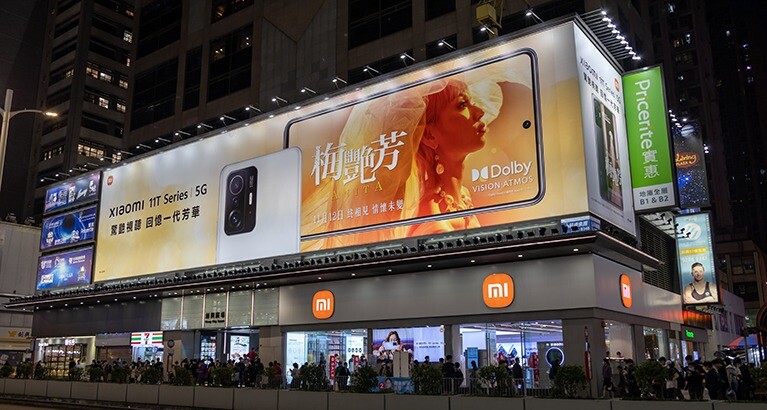How companies can remain competitive despite limited resources
Academic research has long examined how firms can build competitive advantage when they lack critical resources, but this has typically been done through a view that examines supply-side resources associated with a product or service that is rare, valuable, inimitable, or otherwise very tangibly special.

There are enterprises that have what appear to be inferior resources that still manage to become competitive by finding new or superior ways to serve the demand side by creating value for customers. Some of these enterprises are ‘complementors’ that – unlike most suppliers who provide products or services through an established market player – independently provide offerings directly to customers of another firm, and users then decide whether or not to use these complementary services.
Some of these star complementors have significant bargaining power, such as the role of major music labels in dealing with a streaming service like Spotify, but others have little bargaining power with regard to the established focal firm.
In fact, these less-powerful complementors comprise the “silent majority of complementors”, says Shahzad (Shaz) Ansari, Professor of Strategy & Innovation at Cambridge Judge Business School, who has examined this key question: how can such a resource-disadvantaged complementor achieve leadership of a valuable ecosystem?
Xiaomi growth capitalised on patriotism of tech-savvy young Chinese consumers
Shaz’s research led him and colleagues to conduct a 9-year study of Chinese mobile telecom company Xiaomi, which “wedged into Google’s Android ecosystem while also transforming it” by tapping into a movement around MIUI (Mobile Internet User Interface) – a customisable version (more colourful and animated) of the Android operating system that coalesced around Android users unhappy about the system’s lack of customisability.
Keys to Xiaomi’s success included tapping into Chinese patriotism among tech-savvy young Chinese consumers, which translated to support for a homegrown derivative of Android.
The study included many interviews with Xiaomi executives, customers and others associated with the Android ecosystem, as well as analysis of 3,000 pages of documents from Chinese and English news media, websites, industry reports, annual company reports, and other sources – drawn through a search of 3 key phrases (and their variants):
- Xiaomi
- Android Ecosystem
- Chinese smartphone industry
“Xiaomi began as a second-tier complementor of Android but after gaining a large user base, the company then developed its own smartphones and became a first-tier complementor – and this in turn led to Xiaomi gaining architectural control over a derivative ecosystem as an orchestrator, while still playing a complementor role in the original ecosystem,” says Shaz.
“Our research introduces the idea of a ‘foothold resource’ that allows a firm to build an identity movement around what we describe as a mundane resource, in this case a user interface (which is not usually considered a source of competitive advantage). In so doing, such a firm transforms customers from mere users into a sense of community with a deep connection to the firm through a sense of co-creation through the community that is forged.”
Our research introduces the idea of a ‘foothold resource’ that allows a firm to build an identity movement around what we describe as a mundane resource, in this case a user interface (which is not usually considered a source of competitive advantage).
How Xiaomi became a market leader despite no prior experience making smartphones
Xiaomi was established in Beijing in 2010 by a team that had previously worked for big companies such as Microsoft and Google, and Xiaomi’s MIUI interface increased Android’s market share in China. After building a dedicated user community, Xiaomi released its first smartphone 2 years later and within 2 years became a top-3 smartphone seller in the huge Chinese market. Today, Xiaomi is a top three smartphone maker globally, just behind Apple and Samsung.
Xiaomi was able to use this demonstrable user demand to develop partnerships with key players in this market despite having no previous track record in making smartphones.
“We propose a sociological understanding of how peripheral firms can not only fit into established ecosystems, but also transform an ecosystem’s structure through offering a compelling vision and nurturing a dedicated user community,” says the research published in the Academy of Management Journal. “Our findings suggest that gaining a structural advantage in ecosystems does not require a disruptive approach that extracts value from others, but, rather, a mutualistic ‘rising tide lifts all boats’ approach whereby all members benefit from the growth of the ecosystem.”
We propose a sociological understanding of how peripheral firms can not only fit into established ecosystems, but also transform an ecosystem’s structure through offering a compelling vision and nurturing a dedicated user community.
The emotional bond with a product is stronger than filling a market gap
In some ways, Xiaomi’s success reflects the rapid rise of companies like Uber, Amazon and Airbnb over the past 20 years in creating new markets despite having no critical supply-side resources when they were first launched – but instead tapping an idea to create a new market that customers quickly found indispensable to their lifestyles. Likewise, Apple created markets for the iPod, iPhone and iPad through consumers realising how useful these devices were, even though they were not the first such hardware available.
“In our case, Xiaomi did not simply identify a market imperfection, or an unmet need, but premised its innovation on addressing the frustrations of an underserved niche of tech-savvy users and enthusiasts,” the research says. “This user niche wanted a ‘local Apple’, or an affordable, homegrown alternative to the upscale and expensive iPhone, but resented the restrictions of the only alternative, Google’s Android, that did not allow any tweaking of the operating software.
“By creating a sense of collective ownership and camaraderie, Xiaomi was able to fuel an identity movement and cultivate a sizeable base of users who felt connected to one another and to the firm. Social mobilisation is not just about creating a user base, but creating ‘fans’, or users with emotional affinity toward a firm’s offerings.”The research examined both Xiaomi’s dyadic (2-element) interactions with ecosystem constituents such as consumers and smartphone manufacturing plants, and multilateral interactions by leveraging the growing MIUI user community to knock on doors of key suppliers that had initially (85 of the leading 100 smartphone component suppliers first said no) rejected then-little-known Xiaomi’s call to work with them.
By creating a sense of collective ownership and camaraderie, Xiaomi was able to fuel an identity movement and cultivate a sizeable base of users who felt connected to one another and to the firm. Social mobilisation is not just about creating a user base, but creating ‘fans’, or users with emotional affinity toward a firm’s offerings.
3 key phases to Xiaomi’s development and success
1
Building a demand-side community
Xiaomi built a demand-side community by leveraging its supposedly ‘mundane’ user-interface resource.
2
Building supply-side legitimacy
Xiaomi built supply-side legitimacy without a track record by gaining support from key constituents by leveraging its growing user base.
“The company leveraged the user community it had nurtured in Phase I as material proof of widespread demand to persuade suppliers to become partners, and then used these initial connections to signal its credibility to other sceptical players,” the research says.
3
Creating a derivative ecosystem with complimentary offerrings
Xiaomi created its own derivative ecosystem that offered complementary offerings around its own smartphones. This third phase included such steps as:
- orchestrating value creation
- painting a promising future
- fuelling an identity movement
- evoking emotions to generate a sense of affiliation
- providing social proof from initial high-status connections
- combining supply-and-demand-side synergies to attract more prominent partners
- cultivating a community of users to democratise innovation
- leveraging demand-side support and taking substantive actions to establish supply-side legitimacy
- incubating a community of fledgling firms to expand the range of products and services
- evoking emotions to create resonance with second-tier complementors
Empowering target audience to shape the user interface
The study includes extensive quotations from people involved in the Android ecosystem to paint a narrative of how consumers disgruntled by a one-size-fits-all user experience offered by established firms proved a fertile field for Xiaomi to cultivate its offering.
The study says: “A marketing employee of Xiaomi noted: Our targeted consumers are precisely college students with an engineering background in their early 20s. They are technology geeks who love Steve Jobs and the iPhone but cannot afford one.
“These geeks were frustrated by the lack of customisability of Android. Xiaomi offered them an opportunity to address their unmet needs and showcase their skills and experiences by creating an expandable, mutable, and incomplete artifact: a user interface for Android. The company allowed early users to play with it and learn from their peers.”
In so doing, “every user becomes your R&D, every user becomes your sales, every user becomes your friend”; Xiaomi in effect encouraged users to co-design new versions of the interface, so the firm was designing with users rather than for users.
Xiaomi’s positioning as beacon of China’s tech prowess and a global player
At the same time as Xiaomi evoked emotions about affiliation with MIUI, says Shaz and his colleagues, the firm “evoked patriotism and national pride by positioning itself as a homegrown brand embodying China’s technological progress and growing presence on the world stage.” Even in launching its initial hardware, Xiaomi billed its first offering as “the first smartphone of young Chinese”.
Later, in convincing leading component makers to partner with it, Xiaomi used both logical persuasion and persistence.
At smartphone chipmaker Qualcomm, an employee of the company told the researchers: “Our market share in smartphone chips was more than 40% worldwide but around 10% in China in early 2010s … We need to collaborate with Chinese firms to tap this market with huge potential … Xiaomi seemed very unusual due to its growing user base.” In talks between Xiaomi and Japanese electronics giant Sharp, the “Sharp executives were impressed by Xiaomi’s perseverance and how they “negotiated nonstop … from 08:00. until 11:00 when they were thrown out of Starbucks” (meeting venue in Osaka, Japan).
Shahzad Ansari’s research on disruption in TV and computing sectors
The research on Xiaomi draws off and reflects some of Shaz’s previous research including studies that focused on TV video-recording firm TiVo and tech company’s Cisco’s ‘fog computing’ initiative.
The TiVo research looked at how the firm, which was initially seen as a great threat by the television industry, successfully navigated the ‘disruptor’s dilemma’ by gradually winning support from the incumbent TV ecosystem. The established industry was concerned about viewers in the early 2000s fast-forwarding past commercials, but TiVo eventually convinced others of mutual benefits from an interactive system.
The research identified how TiVo reached out to other incumbents such as satellite company DirectTV and the Nielsen ratings firm, while allowing advertisers to target customers through tools such as tagging.
The Cisco research examined how Cisco developed fog computing in response to the success of cloud computing, not by duplicating cloud but by complementing the other technology in order to allow instantaneous data processing deemed important for the emerging Internet of Things in which connected devices become mainstream.
The study identified a ‘drafting off’ strategy that tackles “unmet user needs by creating a complementor to the dominant platform” to create and capture new value. The paper aimed to “redirect attention from competitive and winner-takes-all contexts to a neglected but important type of platform strategies: complementing incumbent platforms.”
The study on Xiaomi is entitled ‘Bricks without straw: overcoming resource limitations to architect ecosystem leadership’, a title drawn from the biblical story about how Pharaoh told his overseers to withhold straw (then a key brickmaking component) from Israelites while still demanding the same daily output of bricks. The study is co-authored by Xianwei Shi of Shanghai Jiao Tong University, Xingkun Liang of Peking University, and Shaz Ansari of Cambridge Judge Business School.
Featured research
Shi, X., Liang, X. and Ansari, S. (2024) “Bricks without straw: overcoming resource limitations to architect ecosystem leadership.” Academy of Management Journal (DOI: 10.5465/amj.2021.1440) (published online Jan 2024)





